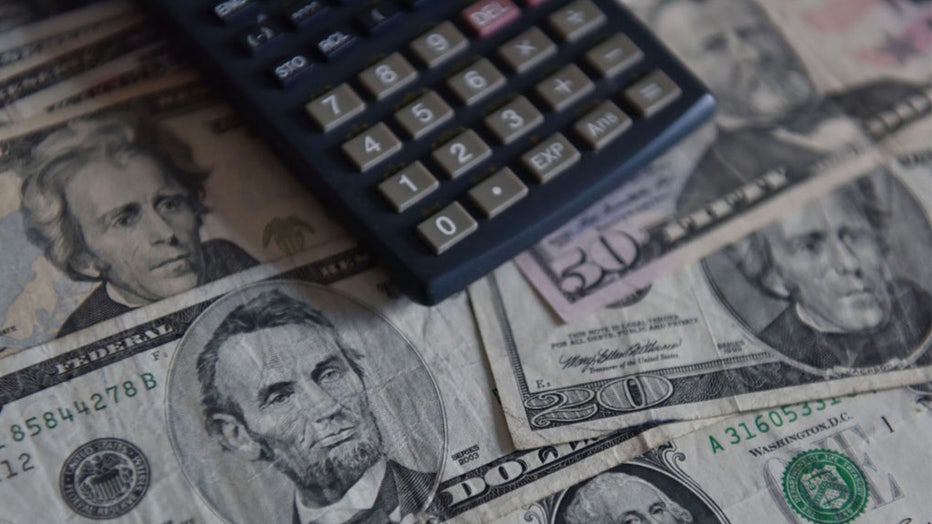States with the highest student loan payments: Study
Obtaining a college degree is often associated with securing better job opportunities in the future, furthering your education and also, debt.
About 42.2 million Americans owe a collective $1.61 trillion in student loans, according to WalletHub data. That’s about an average of $38,000 per student.
Residents in some states also have to make larger payments toward their student loans compared to their neighboring states, WalletHub said.
"Monthly student loan payments vary quite a lot across the country," Chip Lupo, WalletHub Analyst, said.

FILE - A photo showing U.S. dollars and a calculator. (Costfoto/NurPhoto via Getty Images)
Map: How much each state pays on average for student loans
Which states pay the most and which pay the least?
Residents in states such as New Hampshire, Massachusetts and Vermont pay the most on average for their student loans, according to WalletHub.
New Hampshire residents took the top spot with a median student loan payment of $229 a month. Massachusetts came in second with a median student loan payment average of $226 a month, and Vermont with $223.
States that pay the least amount on monthly student loan payments were Arkansas ($142), Mississippi ($142), Nevada ($144) and West Virginia ($145).
"With the average student loan debt of $38,000 and a fixed interest rate of 6.53%, the rate for federal undergraduate loans, it would require a monthly payment of $284 to pay off everything within 20 years," Lupo said.
Latest on student loan forgiveness
President Joe Biden’s latest plan to cancel student loan debt was put on a temporary hold earlier this month by a federal judge in Missouri.
Just as it briefly appeared the Biden administration would have a window to push its plan forward, U.S. District Judge Matthew Schelp in Missouri granted an injunction blocking any widespread cancellation.
Biden’s plan has been on hold since September, when the states filed a lawsuit in Georgia arguing Biden had overstepped his legal authority. But U.S. District Court Judge J. Randal Hall decided not to extend the pause after finding that Georgia doesn’t have the legal right to sue in this case.
The forgiveness plan would cancel at least some student loan debt for an estimated 30 million borrowers.
It would erase up to $20,000 in interest for those who have seen their original balances increase because of runaway interest. It would also provide relief to those who have been repaying their loans for 20 or 25 years, and those who went to college programs that leave graduates with high debt compared to their incomes.
Biden told the Education Department to pursue cancellation through a federal rulemaking process after the Supreme Court rejected an earlier plan using a different legal justification. That plan would have eliminated up to $20,000 for 43 million Americans.

